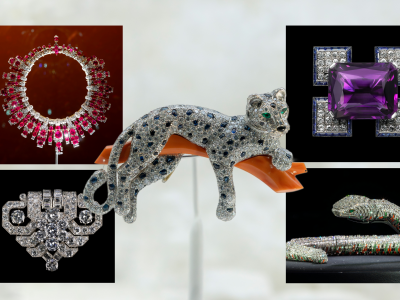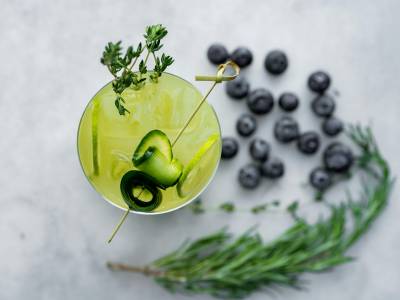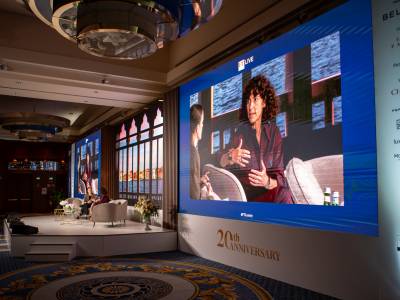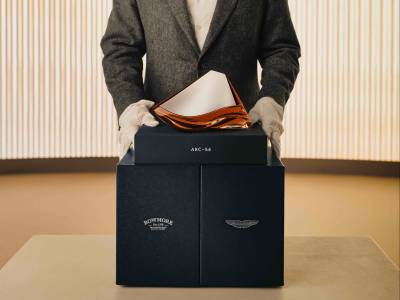In November 1966, Prince Charles, heir to the throne, celebrated his 18th birthday. Like many publications, London Life magazine marked the occasion by featuring him on its cover. Launched by Illustrated Newspapers in 1965 as a hip and happening chronicle of swinging London, London Life made a point of combing the cream of fashionable society to feature in each issue, and numbered Twiggy, Vidal Sassoon and Julie Christie among its cover stars.
Long Live The Tastemaker King
2nd May 2023
Lucinda Gosling explores His Majesty’s evolution into a style icon — albeit a reluctant one who once remarked, “I tend to come back into fashion once every 25 years”. Here, SPHERE spotlights a royal life of style wins, from Savile Row’s finest to swaggering polo ensembles, taking in His Majesty's sustainable practices and fabulous way with a kilt.

Prince Charles was undoubtedly A-list but, in a fogeyish checked jacket, a shirt, tie and hair conventionally neat and above the collar, it appeared the 1960s youthquake had entirely passed the gauche teenage Prince by.
Yet 55 years on, King Charles III has become something of a style icon, an accolade he would no doubt find amusing. With infinite column inches over the years devoted to the late Queen’s rainbow fashions, as well as the dazzling wardrobes of his ex-wife and daughters-in-law, The King’s sartorial reputation has at times been overshadowed. But suddenly he seems effortlessly in vogue, and the fashion press has given enthusiastic reappraisals of his signature looks, both now and then, gushing over his Yves Saint Laurent-inspired 1970s safari suits or the rakish swagger of his polo ensembles. “I tend to come back into fashion once every 25 years,” he once remarked wryly.

That, however, is not to suggest he has no interest in clothes. He is a menswear chameleon, albeit in the most traditional sense, equally at home in Highland kilt and tweeds as in the uniform of Admiral of the Fleet. Still trim in his 70s, The King cuts a dashing figure in immaculate suits from Savile Row’s finest, Gieves & Hawkes, and from Anderson & Sheppard on Old Burlington Street, renowned for creations with a comfortable, almost pyjama-like fit.
He has always favoured a double-breasted style, regardless of the current dictates of men’s fashion, and, whatever cloth or colour of the suit, he adds a dandyish flourish with the addition of a silk tie, pocket square and, often, a floral buttonhole. “I mind about colour and detail and things like that — and colour combinations,” he admitted to British Vogue editor-in-chief Edward Enninful in a 2020 interview.
In this, there is perhaps an echo of his great-uncle, the Duke of Windsor, who, as the previous Prince of Wales, also liked to play with colour and cut, albeit with more ostentation. It was Uncle David who popularised the Prince of Wales check (also known as the Glen plaid) so often worn by The King himself with easy elegance.

Turnbull & Asser on Jermyn Street makes his shirts — an intricate jigsaw comprised of 34 separate pieces finished with mother-of-pearl buttons. His shoes are handmade by some of the country’s most long-established shoemakers: Tricker’s, Crockett & Jones, and John Lobb, all with shops in London’s St. James’s district and workshops in Northampton, Britain’s traditional shoemaking centre.
Like his mother, The King tends to eschew current trends and follow his own instincts, opting for a style that is dignified, correct and quintessentially English. He cares very much about his clothes — and it shows. Watch any footage of The King as he emerges from a car, and his first action to check his cuff links and pat his pocket before waving. He wears his suits with an insouciant ease — he’s a quiet aesthete with a whisper of English eccentric rather than a flamboyant peacock. But those little checks reveal an innate fastidiousness when it comes to his appearance.

Ironically for a man who is a reluctant trendsetter, the qualities he looks for in clothes are the buzzwords of the moment, as the apparel industry grapples with sustainable alternatives to fast fashion. The King has always been an advocate of buying quality and durability, of supporting heritage industries and traditional craftsmanship, and of repairing and reusing: all key elements enshrined in the slow-fashion movement.
Bespoke Savile Row suits and handmade shirts don’t come cheap (prices for a bespoke Turnbull & Asser shirt start at £295) but this is investment dressing at the highest level. Most of his suits he has had for years. The morning coat he wore to the Duke and Duchess of Sussex’s wedding in 2019 was first made for him in 1984, the year Harry was born.
If his clothes show signs of wear and tear, they are sent off to be patched up. Off-duty and in the countryside, The King has a fondness for Barbour jackets. The South Shields firm, founded in 1894 and a Royal Warrant holder since 1974, offers an expert repair and care service to rejuvenate battered old jackets, no doubt part of the company’s enduring appeal to The King.

As well as his trusty Barbour, The King’s wardrobe is filled with a roll call of great British brands, most with a long and illustrious history. There is John Smedley and Johnstons of Elgin for knitwear, Burberry for coats and Dents (established 1777) for gloves, while Kinloch Anderson of Edinburgh provides him with kilts made in the Balmoral tartan, first designed by Prince Albert for Queen Victoria in 1857.
Lock & Co. Hatters, which provides The King with Panama straw hats for summer and his favourite flat caps in Scottish cashmere tweed (perfect for stomping around a wind-swept Sandringham Estate), dates back even further and was founded in 1676 when Charles II was on the throne. Even the cologne reputedly favoured by The King, Green Irish Tweed, is by Creed, a company started in the 18th century. And if we’re focusing on details, The King’s signet ring, worn on the little finger of his left hand, featuring The Prince of Wales feathers, comes from Piccadilly jeweller Bentley & Skinner, the Skinner part of which was established in 1880.

Nearly all these choices fly the flag for British goods, of course, and are also a reflection of The King as a connoisseur of taste and discernment. It is no secret that he enjoys the finer things in life, but only if those things align with his mantra of responsible consumerism. In recent years he has taken this responsibility further, working with the British Fashion Council to promote sustainability in the industry and establishing training courses for fashion students to ensure traditional manufacturing skills survive and thrive. The friendly relationship he has with Stella McCartney, a designer renowned for her commitment to ecologically sound and sustainable practices, was sealed in February 2023 when he awarded her a CBE for services to fashion and sustainability.
The King’s sense of style extends beyond his sartorial choices into other areas of life, such as his commitment to supporting local growers and regional agriculture. Visitors to Highgrove or Clarence House may be served a glass of English fizz from the Camel Valley estate in Cornwall, while food suppliers to the Royal Household include cheesemaker Caws Cenarth Cheese of Boncath, Dyfed; GJ & MM Morris of Crickhowell, Powys, which produces apple juice; and Rhug Organic Farm in Corwen, Clywyd, which provides organic meat. The King also continues to patronise the traditionally regal choice of grocery store: Fortnum & Mason.

Perhaps his most conspicuous display of luxury style is what many consider the holy grail of classic British sports cars — the Aston Martin. He has owned several models but his favourite remains his treasured DB6 MKII Vantage Volante, which was given to him by the late Queen for his 21st birthday in 1969. When it became clear that running a gas-guzzler was at odds with his stand as a champion of the environment, The King had the car’s engine converted by Aston Martin specialist R.S. Williams to run on bioethanol, formulated by the Gloucestershire-based Green Fuels out of a mixture of surplus English white wine and whey, a by-product of cheese-making. Initially sceptical, the team at Williams had to admit that the 50-year-old car ran better than ever on its new diet of cheese and wine!
Behind the wheel or in front of the cameras, it seems we have a King who, in his own understated way, is a seasoned arbiter of good taste and refined style. The London Life cover is a reminder that he has always been more Jermyn Street than Carnaby Street, but that, in a septuagenarian monarch, is perhaps no bad thing. The King now appears a man very much comfortable in his own skin — or in his own suits. Long live Charles III, the Tastemaker King.

Discover this story and more details about the The King and his Coronation in The Illustrated Coronation Edition, published by Illustrated London News.
On sale though leading supermarkets, W.H Smith or www.britishcoronation.com







